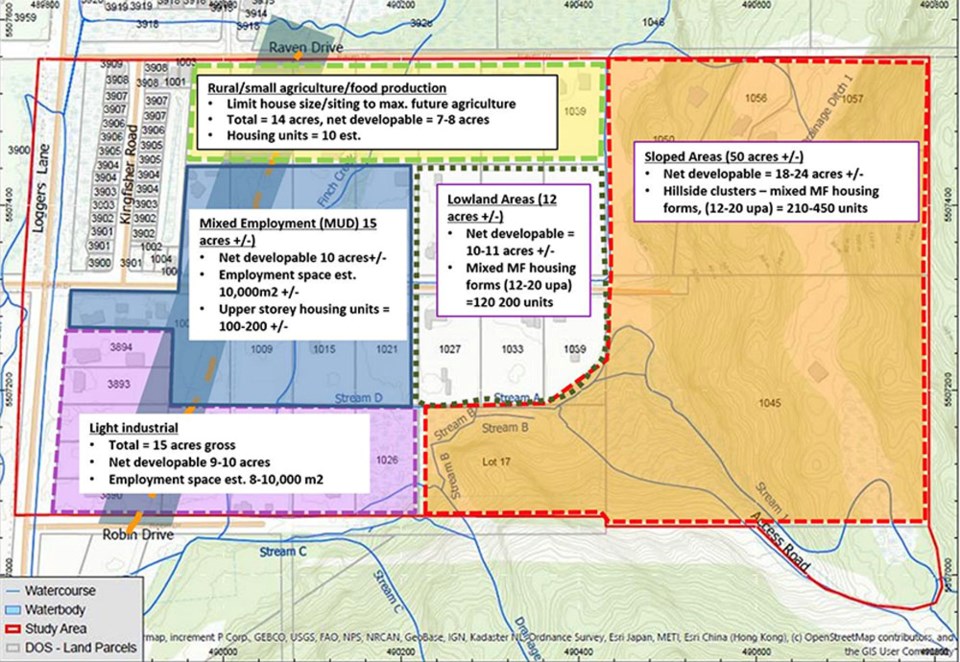District of Squamish council shared their vision for the neighbourhood of Loggers Lane East, which included car-free transit, rural land and some employment space, among other things.
During their meeting on March 3, council was presented with proposed drafts for the sub-area plan for that zone, which encompasses the area east of Loggers Lane between Robin Drive at the south and Raven Drive at the north.
In reality, the neighbourhood extends up to Centennial Way, but the area north of Raven Drive has been excluded in the sub-area plan, as that area has been developed.
The plans for this remaining zone are being closely watched by some in the development community — a number of the normally-empty audience seats in council chambers were taken up by developers and their associates during the meeting.
Staff presented council with two options for how the neighbourhood should be laid out.
Option 1 presented a vision of rural land at the northwest corner by Raven Drive and Loggers Lane, mixed employment below it, and light-industrial land at the southwest corner by Robin Drive. Multi-family housing would extend from the centre to the eastern corners of the area, which have sloped terrain.
Option 2 would eschew rural land. Mixed-use land and light-industrial areas would be tucked in at the southwest corner by Robin Drive and Loggers Lane. The rest of the area would be covered in multi-family housing units.
Council chose Option 1.
Elected officials then gave feedback and asked for adjustments to be made.
Mayor Karen Elliott called for a green design.
“Why isn’t that the leading conversation here for any neighbourhood planning that we’re doing?” said Elliott. “By 2050, each neighbourhood has to support its own carbon neutrality, and so that means transit, that means walkability, that means access to services without getting in your car. Are we setting that context with people as we’re entering into these conversations?”
She also had concerns about staff’s proposal to use Finch Drive as an arterial road, saying it could split the neighbourhood in half.
Elliott also asked that the rural character of the neighbourhood be preserved. She hoped “natural assets” could be used instead of curbs and sidewalks.
Coun. Armand Hurford asked staff to consider adjustments to the boundaries of the proposed rural-designated area.
“I think we’ve heard a lot about...agricultural uses and food security — it’d be a shame to lose that altogether here,” Hurford said.
Coun. John French noted he might like to see the industrial park reach its capacity before industrial uses arrive in the area.
French added that rural uses could support animals but perhaps not crops.
Coun. Jenna Stoner said she was supportive of rural uses in the area, but hoped staff could do more research into what that could look like.
Stoner floated the idea that processing and manufacturing operations could also take place there.
Coun. Eric Andersen said the area to the north could’ve incorporated more rural and habitat and green space. He added the mixed-use area would give the neighbourhood a distinctive character.
Making the area a car-free zone was a priority for Coun. Chris Pettingill. He wanted staff to ask the public what kind of design they’d need to help them get rid of the need for a vehicle.
Staff will now incorporate the feedback into another draft and it will be presented at a public open house in late this month or early April.




